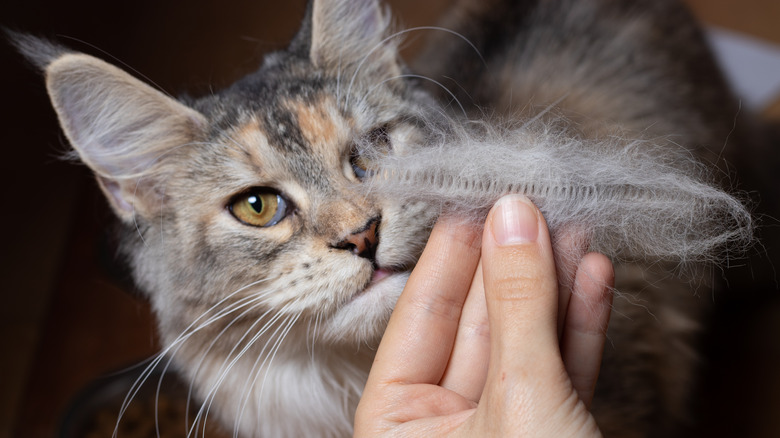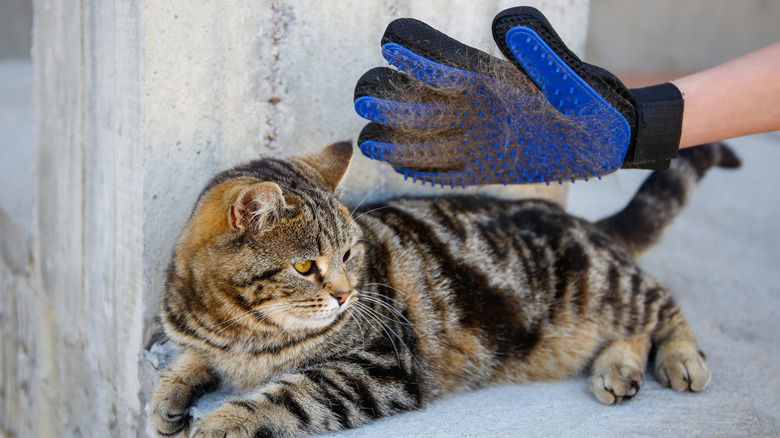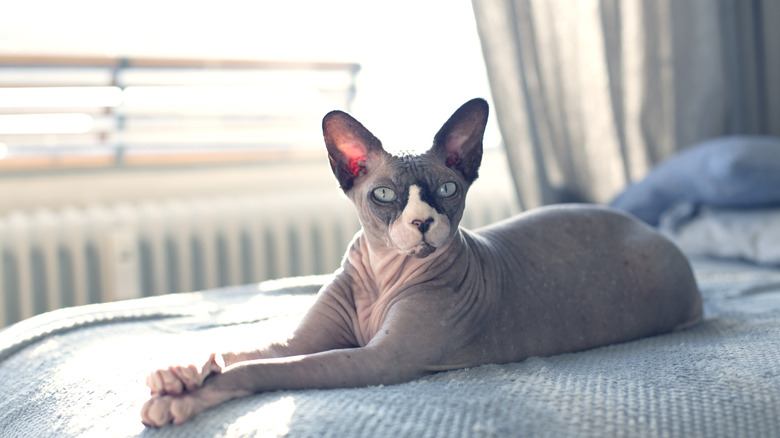Expect Your Cat To Shed The Most Hair During These Months
If you live with a cat, you've probably accepted that there will always be a fine layer of hair coating pretty much everything you own, from clothes and linens to your dishes and silverware. (We've all eaten cat hair. Don't even pretend you haven't.) Most cats start shedding at around six months of age, so anyone who owns an adult cat has experienced this. And you might look around sometimes and notice way more kitty hair than normal. We're talking tumbleweeds, clouds, and confetti.
Turns out, there's a good reason for this. The amount a cat sheds usually increases noticeably during certain months of the year. In fact, there are two shedding "seasons." The first is in spring. As it warms up, cats shed their winter coats. Many cats are double-coated, meaning they have two layers of fur, and during the spring, they will shed their undercoat, a layer of short hair that helps keep them extra warm in the winter. Cats will shed heavily again in the fall. This time, they're gearing up for cold weather by ditching their summer coats and building up their winter coats.
How to keep your cat's shedding under control
While you can expect more errant cat hairs from your kitty during spring and fall, cats shed all year long. The hair is nonstop. So, what can you do to reduce cat shedding, or at least keep it under control? One approach you can try to corral the cat hair is to brush your feline on a regular basis. If your cat has an especially thick coat, brushing them daily can prevent mats from forming, especially during those shedding seasons. Feeding your cat food that's full of healthy fats and protein can also help your kitty maintain a healthy coat. Making sure they have water to drink and encouraging them to stay hydrated is also a good idea.
Stress can cause excessive shedding in cats, so providing a calm atmosphere can prevent cat hair from taking over your life. There are other health conditions in cats that can cause shedding, like allergies, parasites, skin infections, and metabolic disorders, so if you notice your cat dropping way more hair than normal — more than they shed during the spring and fall — definitely consult your vet.
Which cat breeds shed the most and least?
Prospective cat owners might wonder which cat breeds shed the most and the least. If you're looking to avoid excessive hair, you may want to steer clear of high-shedding cats like ragdolls, ragamuffins, Siberians, and American bobtails. When considering a feline that doesn't shed, the first and most obvious option is a hairless cat, like a sphynx. However, it should be noted that low shedding does not mean low maintenance (or hypoallergenic!). Hairless cats require special care and grooming, especially when it comes to keeping them out of the sun. But it is true that with a hairless cat, you won't accidentally swallow fur along with your morning vitamin.
Cat breeds that have hair but don't shed a ton include Cornish Rex, Devon Rex, Burmese, Siamese, Bengal, Singapura, and Bombay. These are mostly short-haired cats. Birman cats are fluffy and long-haired, but they don't shed much or require a lot of grooming. There is no cat with fur that doesn't shed at all. And, importantly, there are no truly hypoallergenic cats. Dealing with hair is part of owning a feline, and if you love these creatures, it's a small price to pay.


